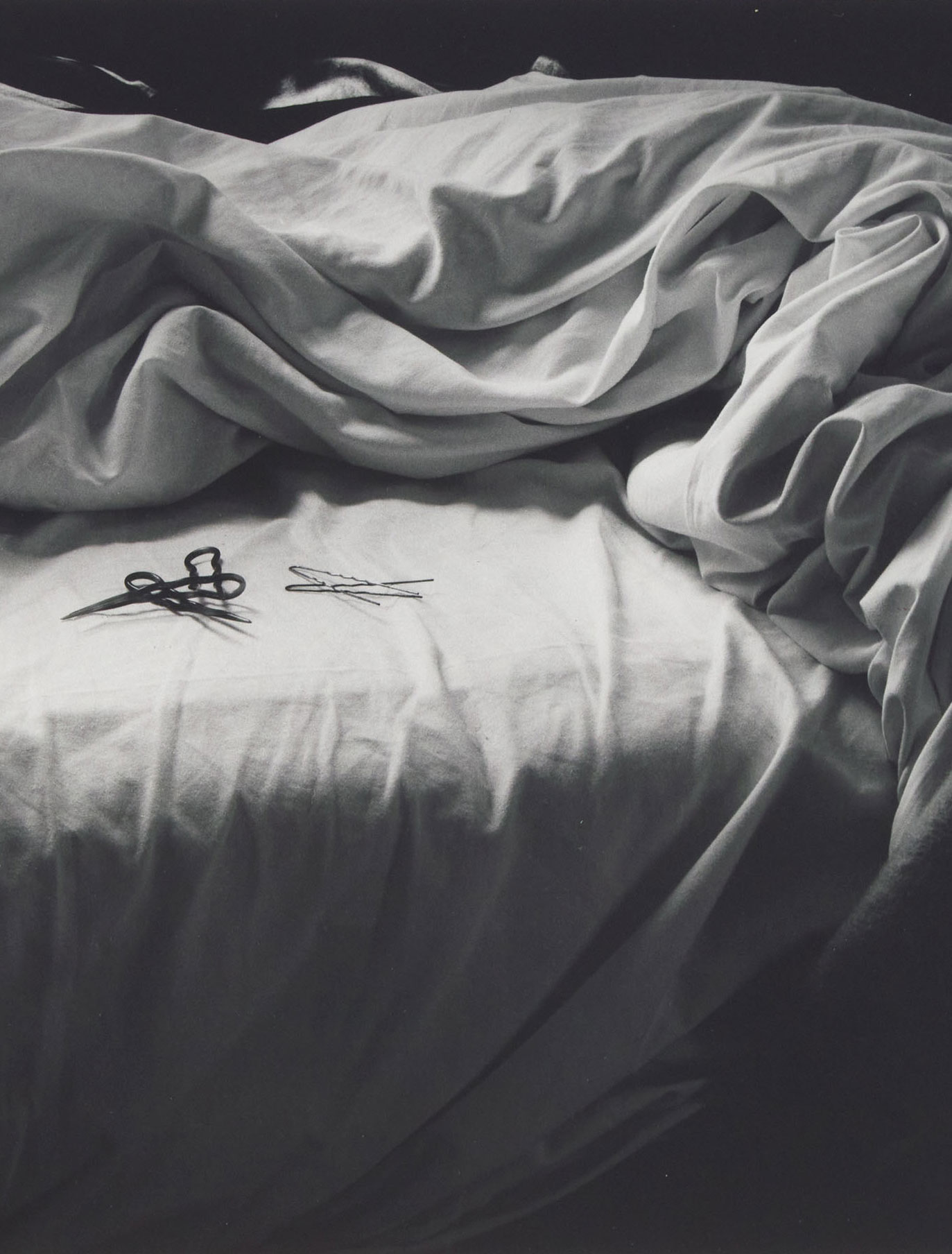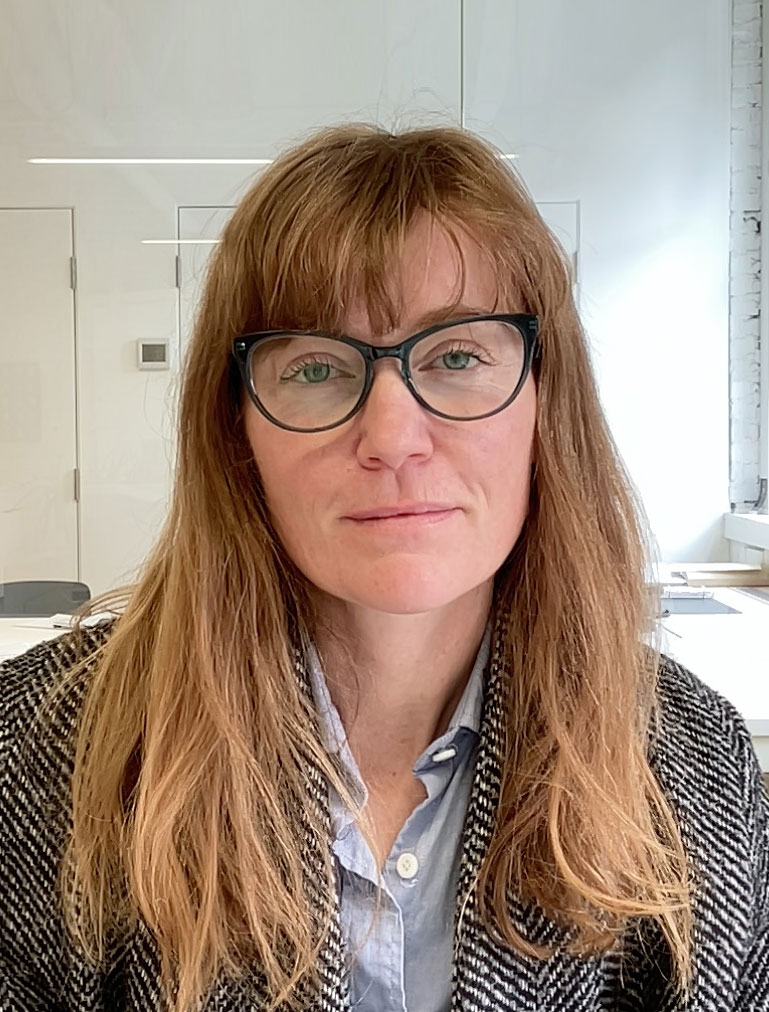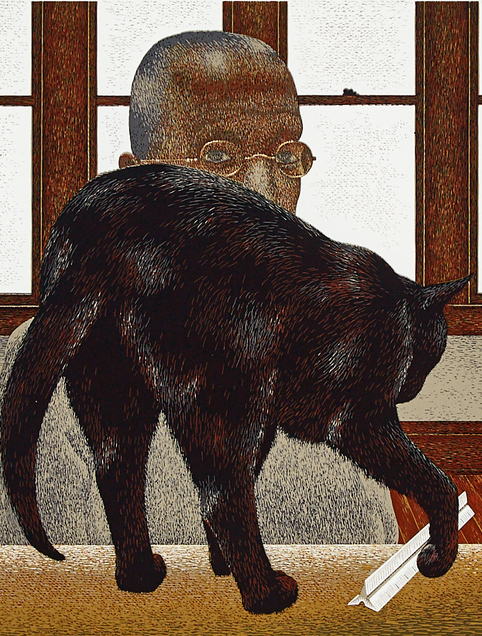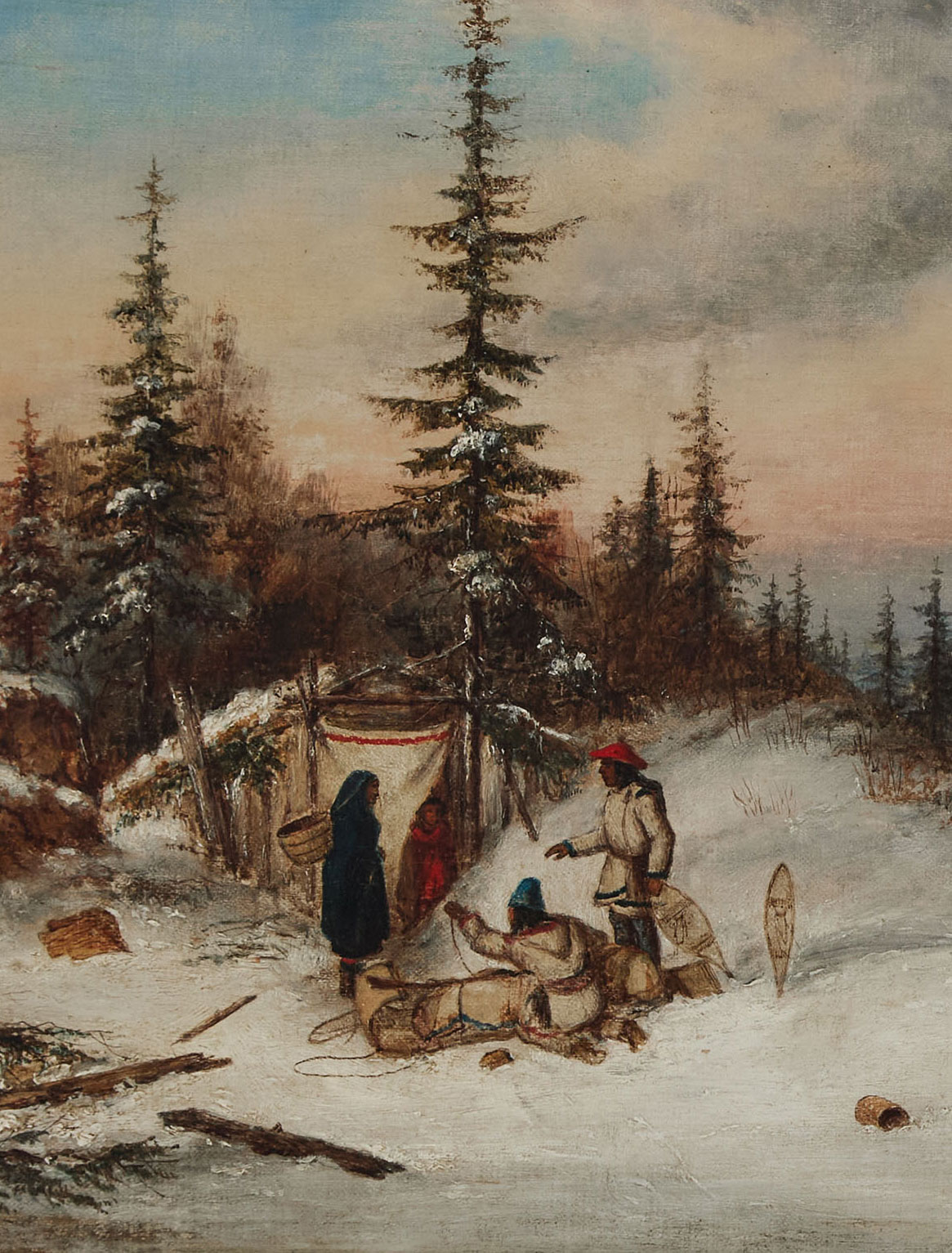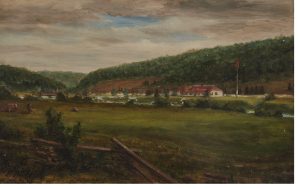
4.75 x 7 in — 12.1 x 17.8 cm. Sold at Waddington’s, November 2023.
A few days after the close of our major fall 2023 auction of Canadian Fine Art, we received a curious email. The sender was Alexander Reford, the Director of Les Jardins de Métis (Reford Gardens), a National Historic site located on the northern part of the Gaspé Peninsula. Reford was writing to inform us that he was the successful bidder on a small painting by Sir William Cornelius Van Horne, “Fishing Camp, Les Fourches, Matapedia and Causapscal, New Brunswick, 1889,” and that with this purchase, the work would be returning to the area it depicted, over 130 years after it had been made.
This tiny and well-travelled painting is part of a much larger legacy, which tells a story about the builders of the Canadian Pacific Railway, and a route through several important collections, including that of Sir Christopher Ondaatje. With help from Alexander Reford, we are able to tell the more complete history of this painting from its inception to its new home in the museum at Les Jardins de Métis.
Baron Stephen’s Fishing Lodge
Sir William Cornelius Van Horne (1843-1915) is best known as one of the men who created the Canadian Pacific Railway (CPR). He became the CPR’s general manager in 1882, joining forces with its first president, George Stephen,1st Baron Mount Stephen (1829-1921). Scottish-born Stephen had immigrated to Montreal at the age of 21 to work in a relative’s draper establishment. Within ten years, he had become its sole proprietor. He became involved with the city’s banking and railway establishments, and used his incredible acumen to rise to the top of both industries. Instrumental in the success of the Canadian Pacific Railway, Stephen was tasked with raising the enormous sum of $100 million required to finance the project. Despite his humble beginnings, Stephen became the richest man in Canada, as well as a noted philanthropist.
Stephen’s great passion in life was salmon fishing. In 1873, he purchased a property at the confluence of the Matapédia and Cascapédia rivers, a junction known as Les Fourches (The Forks). The Matapédia is known as one of the great salmon rivers in the world, and once it became readily accessible due to the proximity of the railroad, it attracted fishermen from around the world. Stephen constructed a building on the site, which Reford describes as “modest in proportions and utilitarian in configuration. With a single-storey and a long rectangular footprint, the camp’s main rooms faced the river. A full-length verandah created the building’s largest room, the covered outdoor space where Stephen and his guests could watch the fishing and share a drink to the day’s success. It remains one of the best examples of fishing camp vernacular in Quebec.”
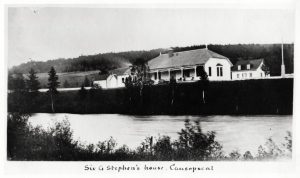
A great pioneer and promoter of sport fishing in the Gaspé region, Stephen would visit this fish camp often before relocating to a second fishing camp in Grand-Métis in 1886. Fishing camps like this one did double-duty as both a place of leisure and business. Stephen kept a log of his visitors, which included financiers, nobility, politicians, lawyers, and fellow businessmen – including Van Horne.
Though busy with his work on the CPR, Van Horne was a sophisticated artist who liked to paint in his spare time. “Fishing Camp, Le Fourches,” which depicts the low-slung building Stephen constructed on the river’s banks, was most likely painted while holidaying with Stephen. Another painting of the site, a watercolour, was also painted in 1889.
In 1891, Stephen sold Les Fourches to John Stewart Kennedy, an investment banker. Kennedy sold the camp in 1902 to a group of American businessmen who operated as the “Restigouche Salmon Club.” The club became the world’s most exclusive salmon fishing club for a period, before they sold their fishing rights. Today, the property is a heritage site open to the public.
Elsie Reford and Les Jardins de Métis
Stephen’s second fishing camp in the region, on the Métis River, was acquired in 1886. The property was closer to Montreal and more accessible from the Intercolonial Railway. On the site, Stephen built Estevan Lodge, which was more lavish than the one at Les Fourches. The name, “Estevan,” comes from the cable code that Stephen used when he acted as the president of the Canadian Pacific Railway for his confidential telegraphs between him and Van Horne.
Stephen moved to England in 1888. His last trip to Estevan Lodge was in 1894, following the wedding of his niece Elsie Reford (1872-1967) to Robert Wilson Reford (1867-1951). This would also be his last trip to Canada. After the death of his wife in 1896, Stephen lost interest in fishing on the Métis River, noting that he had never been on the river without her by his side.
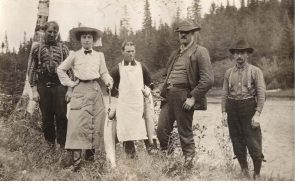
The fishing camp on the Métis was given to Elsie Reford. Elsie had been visiting the camp since the early 1900s to fish for salmon, and was an avid outdoorswoman, enjoying horseback riding, canoeing and hunting. At the age of 54, Elsie required surgery for appendicitis, which curtailed her ability to participate in the physically demanding pursuits she had previously enjoyed. Her doctor suggested she take up gardening, which would allow her to spend hours outdoors. In 1926, Elsie began converting her property into extensive gardens, a project which would take ten years and result in 15 gardens spread over 20 acres. Les Jardins de Métis were opened to the public in 1962. They are the northernmost public gardens in eastern North America, and have had to be designed around the complex and harsh climate of the region. Alexander Reford is Elsie and Robert’s great grandson, and now runs the historic site his family founded.
Robert W. Reford, like Stephen, was an active art collector. Alexander explains that “my ancestors were very avid collectors. When they made money, they spent it on their collections (and their gardens). And even when they had no money, they still spent on collecting.” Robert W. Reford’s extensive collection, which included work by Cornelius Krieghoff, Frederick Verner, and James Duncan was sold by Sotheby’s in 1967 and 1968, one of the first auctions of Canadiana. Much of his collection was purchased by Peter Winkworth (1929-2005), an avid collector of early Canadian art. Winkworth’s collection was auctioned by Christie’s in 2015, and was another high point for the Canadian art market.
The Ondaatje Collection
“Fishing Camp, Le Fourches” was not part of any of the aforementioned collections, and is presumed to have instead passed through the Van Horne family. The painting came up for auction in June of 2003 at Joyner Waddington’s in Toronto. It was bought by Sir Christopher Ondaatje, who, like Stephen and Van Horne, had come to Canada and had worked hard to ascend to the top of the business world. Like both these men, Sir Christopher was also an avid art collector. Historical Canadian art was of particular interest, particularly the work of Van Horne. Sir Christopher explains that his interest was sparked when he was living in Montreal. Van Horne’s mansion is situated at the foot of Stanley Street in Montreal’s Golden Square Mile, down the road from where the Ondaatjes lived when they were first married in 1960. As Sir Christopher told Waddington’s, “my wife and I used to stand on a wall next to his house and try to catch glimpses of his collection. He was one of my heroes.”
In 2023, Waddington’s was fortunate to handle the sale of several paintings from Sir Christopher’s collection. These works represented compositions dear to Sir Christopher, who was not quite ready to part with them until recently. In selling a portion of his art collection, Sir Christopher expressed his desire to bring the paintings back to Canada and see them enter other collections, where they can inspire the next generation. One of these cherished works was “Fishing Camp, Le Fourches.”
travelling FULL CIRCLE
With its purchase by Alexander Reford, “Fishing Camp, Les Fourches” will travel back to Quebec, to enter a new permanent exhibition at Les Jardins de Métis in the historic Estevan Lodge. The exhibition is being developed for the historic site’s 100th anniversary celebrations in 2026. Alexander explains that “the exhibition will celebrate the story of the estate that is unique in starting as a very private fishing lodge and is now a very public garden that welcomes more than 60,000 visitors every summer.”
Over the years, Alexander Reford and his team have been working to repatriate works from Robert W. Reford’s dispersed collection, which included both Canadian and European art. Per Alexander, “because the value of the latter vastly outweighs our budget, we have mostly been collecting Canadiana, maps, works on paper, books, documents, photos and ephemera. For our staff, documenting the history of objects is a passion, and linking the works to their artists, makers, owners, dealers and auction houses makes the story richer and more interesting. Our visiting public thinks the same thing. An object on a table is boring. An object in the hands of its creator or owner, comes alive.” He adds that “the story of the objects helps illustrate that you can be a custodian or owner of an object for a short time only; but you can own the story of an object if you have photographs and documentation. The story-telling is more permanent than the ownership.”
Of acquiring the Van Horne painting, Alexander explains that he closely follows Waddington’s auctions and was “pleasantly surprised…and a bit nervous when I saw the item come up for auction. I thought it was going to be in the Ondaatje collection forever and that the collection would be gifted to an institution, as Sir Christopher has been a very generous donor to institutions in both Canada and the UK. We feel privileged to have had an opportunity to bid and lucky to have been successful.”
Related News
Meet the Specialists

Liz Edwards
Director, Canadian Fine Art

Gregory Humeniuk
Senior Specialist

Kendra Popelas
Consignment Specialist



